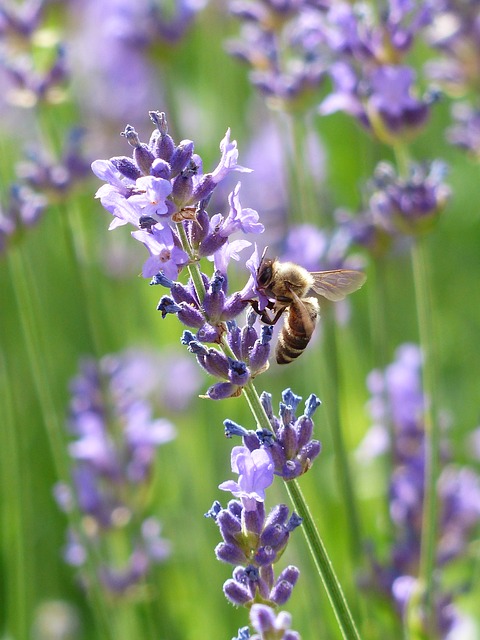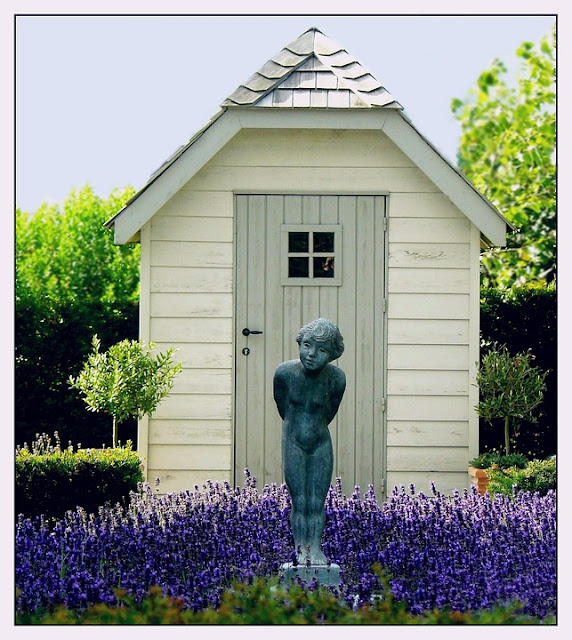For a standalone shrub or in a container the smaller more compact Munstead is still a popular choice. Lavender's greyish leaves remain evergreen in winter and in spring vigorous new growth emerges eventually leading to sprouting stalks of up to approx.12''(30cm) in height on which fragrant flowers begin to bloom in June.
English Lavender through the Ages
There are many historical references to Lavender through the ages, indeed it is mentioned in the Christian Bible under the generic name Spikenard, a blend of essential oils which in those days included Middle Eastern Lavender. The Egyptians are thought to have used it as a perfume at the time of the Pharaohs. Traces of Lavender was found in urns discovered among their mummified remains in the tombs of the pyramids. The Greeks also used Lavender in times before Christ.
English Lavender in Roman Times
It was Romans who really took Lavender to their hearts using it to infuse and scent their bathing water hence the origins of the it's name Lavender coming from the Latin verb 'Lavare' which means 'to wash'. They are thought to have been responsible for introducing the plant to Britain during the Roman occupation which began in AD 43. It was grown in Monastery herb gardens in the Middle Ages, the monks using it mainly for medicinal purposes. And later in England's grand country houses. Queen Victoria is said to have enjoyed a Lavender scented bath. Today one can buy Lavender essential oils to use as a natural soother for a wide range of ailments and indeed to bath in.
English Lavender Cultivation
Cultivating your Lavender plant is relatively easy. They prefer an alkaline loamy soil so if you have a more clay or peaty garden be sure to work in some loamy sandy soil first. It should be well drained, Lavender does not tend to do well in damp shady areas, indeed you will probably find the roots rot in the winter. So be sure to plant in full sun. Once planted just a light dusting of fish blood and bone fertilizer will help growth in the spring. Pruning should ideally be done in late summer by removing the tall stems of flowers down to the main plant. Sadly Lavender plants only last up to five years before they becoming old and woody. The only option then is to replace them.
Down at Sir Humphrey and Lady Binoche's plans are afoot to create our own Lavender hedge of Hidcote blue. Lady B and I are down at my one of my favourite nurseries for professionals buying containerised plants and are looking forward to having a heady aroma of scent wafting across the garden on those long summer evenings.
General discussion and your views are welcome please say hello. I regret however because of my busy schedule, I am unable to answer many questions. Sneaky advertising will be deleted sorry. Thanks so much for visiting my blog today.









2 comments:
beautiful flowers and beautiful pictures too! i wonder how long it takes to get such a nice looking garden.
who took the photos? they look very nice, and a the flowers are just awesome!
Post a Comment